Hey, it’s Alexandra. Welcome to my weekly newsletter where I share my latest reflections on professional development & well-being.
If you’re not a subscriber, here’s what you missed recently:
Subscribe to get future posts emailed to you:
This week, I’m sharing the art of healing using:
A metaphor from Japanese pottery
Lyrics from Leonard Cohen
A criterion for leadership
☕️ Read time: 5 mins (best with tea or coffee)
I saw a post the other day that said “Instead of asking yourself why you’re so lazy, ask yourself why you might need so much rest” and found myself nodding emphatically.
Problem-solving from a place of compassion yields miraculous results. I learned that the hard way last summer. After grinding as a solopreneur for just shy of two years, I found myself in a place I never thought I’d end up.
Instead of a second-anniversary victory lap, my entrepreneurial race car ran out of gas. Summoning the energy to get out of the car and walk down the track to figure out what to do next was among the biggest challenges I’d faced in my thirty-three tours around the sun.
Eight months later, I wish I’d known then about a metaphor I’ll share now.
Japanese Pottery (As a Metaphor)
“Kintsugi (金継ぎ, "golden joinery"), also known as kintsukuroi (金繕い, "golden repair"), is the Japanese art of repairing broken pottery by mending the areas of breakage with urushi lacquer dusted or mixed with powdered gold, silver, or platinum.”
—Wikipedia
Here are some gorgeous examples of Kintsugi:
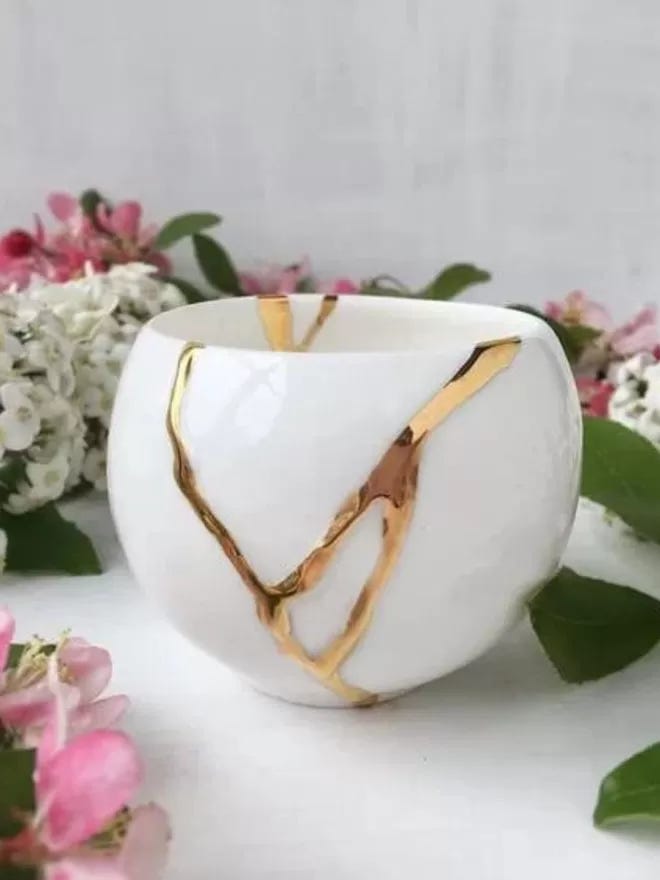
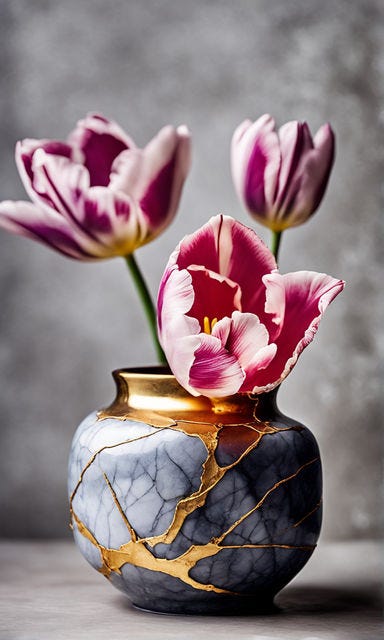
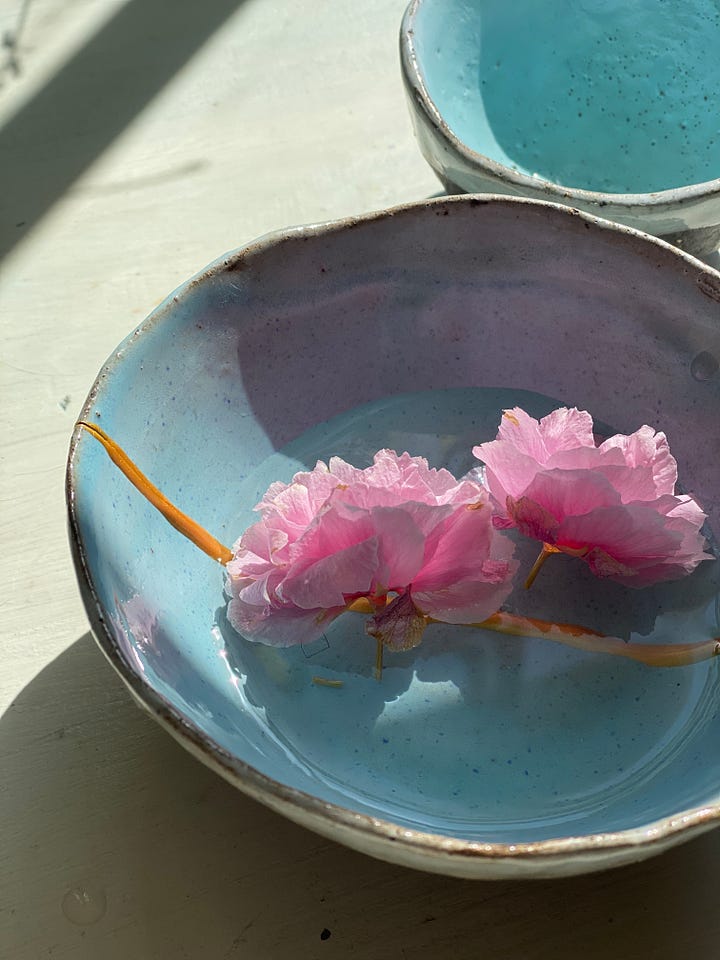
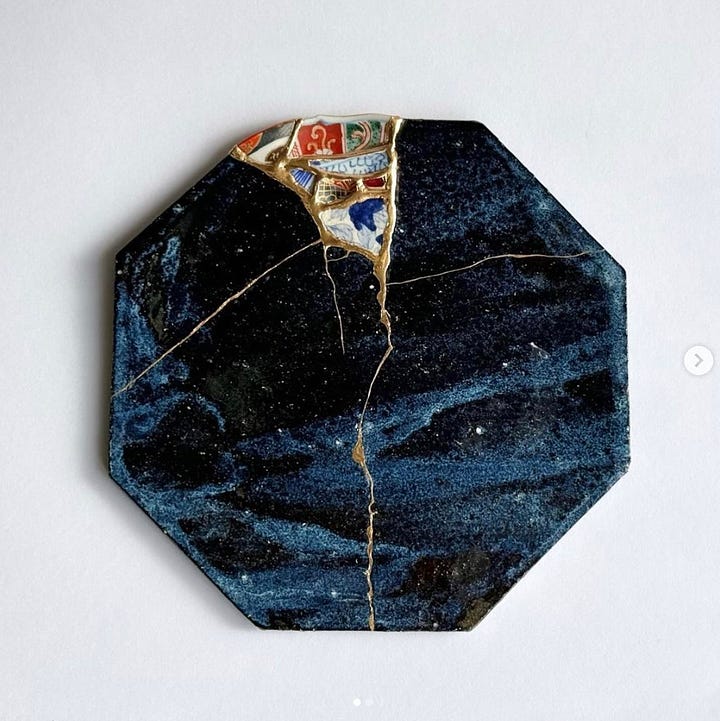
I first learned about Kintsugi in a video I saw on Twitter. I was captivated by the process and more so, its intention to embrace imperfections as beauty marks.
Here’s what I mean by that:
“Kintsugi is […] built on the idea that in embracing flaws and imperfections, you can create an even stronger, more beautiful piece of art. Every break is unique and instead of repairing an item like new, the 400-year-old technique actually highlights the "scars" as a part of the design. Using this as a metaphor for healing ourselves teaches us an important lesson: Sometimes in the process of repairing things that have broken, we actually create something more unique, beautiful and resilient.”
I’d learned about a similar concept of reassembling the pieces of your life in the aftermath of a tragedy, back in 2009.
When my cousin died suddenly at the tender age of twenty-one (two weeks shy of my nineteenth birthday), my heart was broken and my perception of how the world worked was smashed as though a framed family photo had fallen to the floor.
Months later, a single sentence spoke to me. I can’t find the article but it went something like this:
When your world is shattered, the pieces will eventually come back together over time—albeit in a different formation.
The healing process in mourning my cousin required me to accept that what was would no longer be.
I had a choice to make. I could either sit with the broken frame or hang a new one filled with appreciation for all the happy, abs-hurt-from-laughing memories we’d shared growing up spending summers at the lake, celebrating family holidays, and all the moments in between.
I chose the latter.
However, reframing wasn’t a linear process. At times it was as messy and confusing as a child scribbling on the wall. It took time, years actually, but in mending the pieces, my family and I have become stronger, more compassionate people with a greater capacity to see the beauty in life. We’ve managed to find a “new normal” while keeping my cousin deep in our hearts.
This brings me to another, similar metaphor on healing.
A Similar Metaphor (From Leonard Cohen)
One of my favourite quotes on overcoming difficulties is by fellow Montrealer Leonard Cohen. Cohen, in quoting his song Anthem, said:
“There’s a crack in everything, that’s how the light gets in.”
In my case of burning out last summer, I was so mentally and physically fried I feared I was shattered beyond repair.
But fortunately, those hefty cracks in the armour I was wearing to persevere on a difficult career path allowed support from family, friends, and peers to rush in. They were my light and thanks to their help, my own form of Kintsugi began to unfold.
It started with opening up about how lost and disheartened I felt.
The solopreneur path was no longer giving me the fulfillment it had early on. I missed being part of a team and having a more structured workflow.
Over and over again, I cried as I recounted how hard I’d worked, and how little I had to show for it.
I felt like a failure.
But through the compassion of those in my inner circle, I became more compassionate toward myself.
Sharing my pain brought me even closer to the most important people in my life. (That’s the thing about vulnerability. It’s an act of reciprocation and each time you share something deeper about yourself, you prompt others to take you deeper too.)
I took a few weeks off to rest and recharge by the lake where I grew up spending summers at my grandparents’ cottage. I realized that while I was grieving one career identity it bore no impact on the most important relationships in my life.
It occurred to me that while I hadn’t achieved any mass success externally, I’d made tremendous strides in personal growth and expansion. Ultimately, that was worth more.
In the weeks and months that followed, I steadily made the transition from being utterly burnt out to regaining my zest for life. I embraced my healing journey as a personal pottery project—Kintsugi in human form.
Eventually, where I once felt cracks, I felt fuses of gold.
The pride I feel about my final artwork runs deep. It turns out I share that similarity with some great leaders.
Leaders Embody These Metaphors
Fast forward to January 2024—half a year after my burnout—and my new employer hosted a kickoff event for over a hundred employees in Montreal. During the event someone asked our CEO what it takes to be appointed to senior leadership and among several criteria shared, one spoke to me most.
It was that everyone who qualified as a senior leader had been through a difficult experience and emerged stronger and more well-rounded.
It reaffirmed the pride I felt about overcoming my own challenges—be it as recent as my burnout last summer or as far back as losing my cousin in 2009.
I hope you feel that same sense of beauty and pride in whatever it is you’re mending at the moment.
That’s the art of healing.
Thanks for reading and have a wonder-full week,
💛 Like or comment if you enjoyed this edition.
☕️ Let me know if you visit Montreal & we can grab coffee or tea.




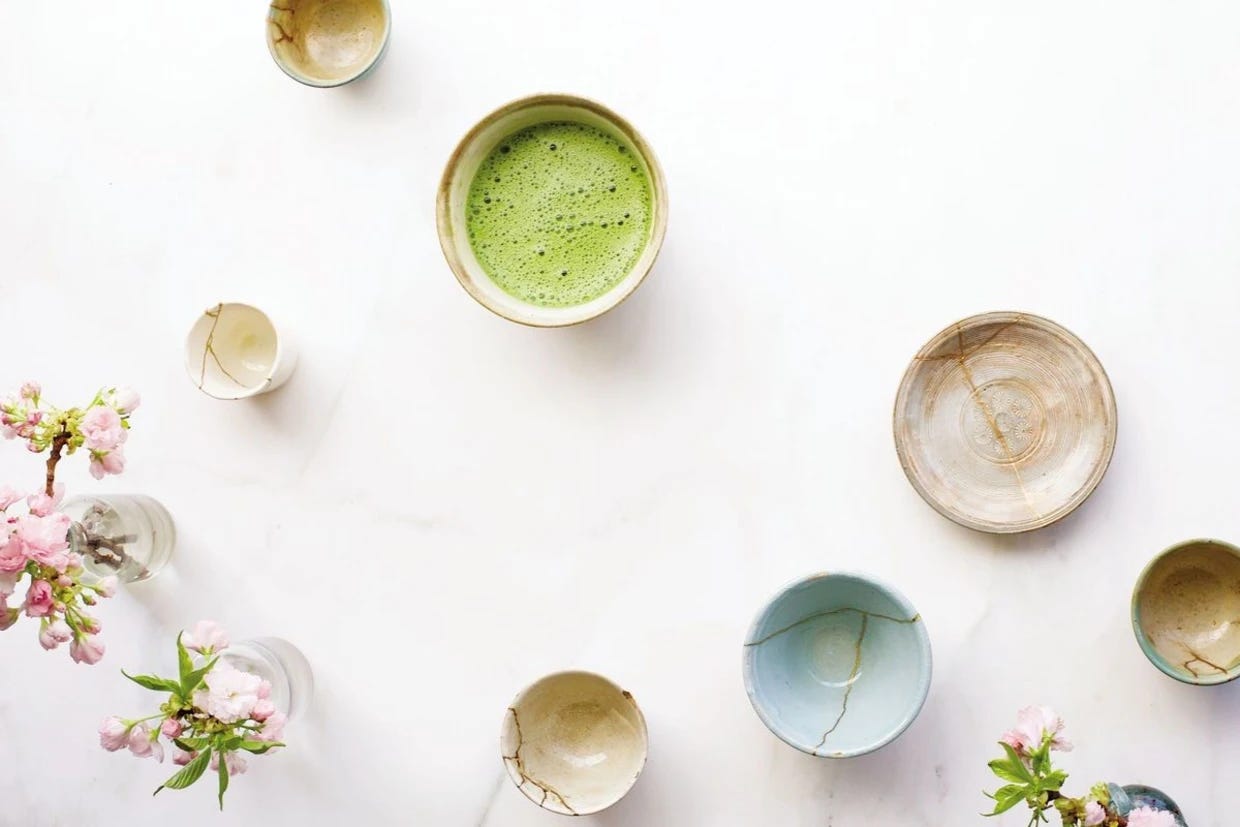

I love the metaphor of kintsugi for personal healing. Healing and overcoming adversity doesn’t mean going back to the way things were, but creating something different and hopefully better
Great article Alexandra , very inspirational and uplifting ❤️